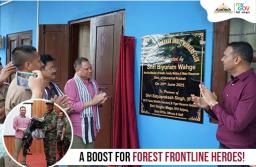The East Siang District Administration’s launch of Mission Ayang in Kiyit village is a landmark step toward creating a supportive and inclusive environment for senior citizens. This initiative not only addresses the physical and emotional needs of the elderly but also fosters intergenerational respect and care.
Expanding Mission Ayang to remote areas can be achieved through a multifaceted approach that leverages technology, community involvement, and existing infrastructure. Telemedicine and mobile apps can play a crucial role in bridging the healthcare gap for the elderly in remote villages by offering consultations, monitoring chronic conditions, and providing timely advice. Community-based organizations and local youth groups can identify underserved elderly populations and act as conduits for support, ensuring that their specific needs are addressed. Additionally, existing infrastructure like Anganwadis and ASHA workers can be leveraged to integrate elderly care services, making use of their established presence and trust within communities.
Engaging the younger generation is essential for fostering a culture of empathy and respect toward senior citizens. Schools and colleges can integrate Mission Ayang into their curricula or extracurricular activities to promote these values.
Join the conversation on MyGov and share your ideas to build a compassionate and inclusive society that values and honors our elder generation.













BrahmDevYadav 11 months 2 weeks ago
What is the model of Integrated Care for the elderly?
Medical and old-age care integration refers to integrating medical care, rehabilitation, nursing, and life care to meet the needs of elderly people and is an effective means to improve the quality of old-age care.